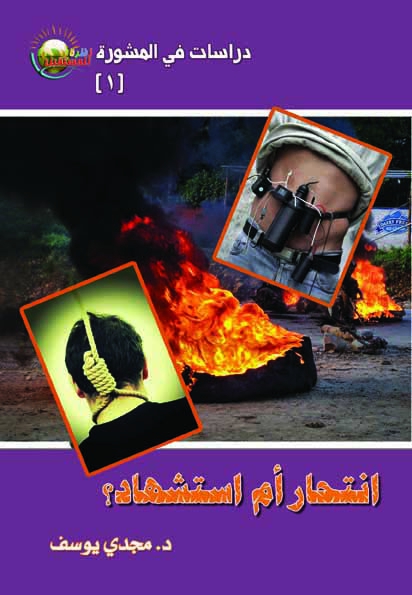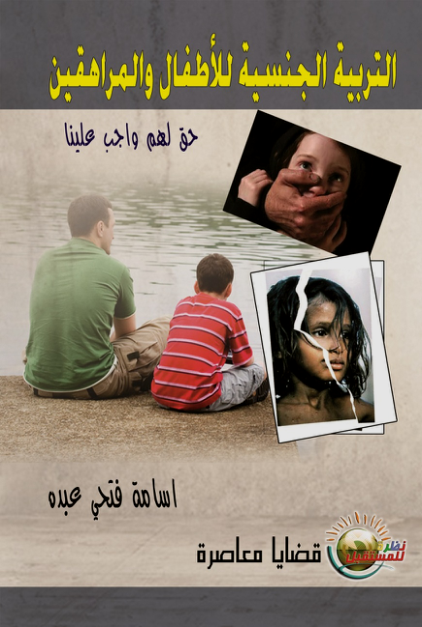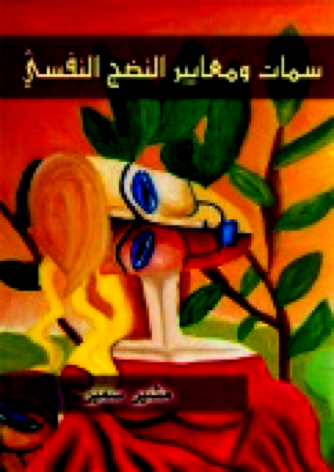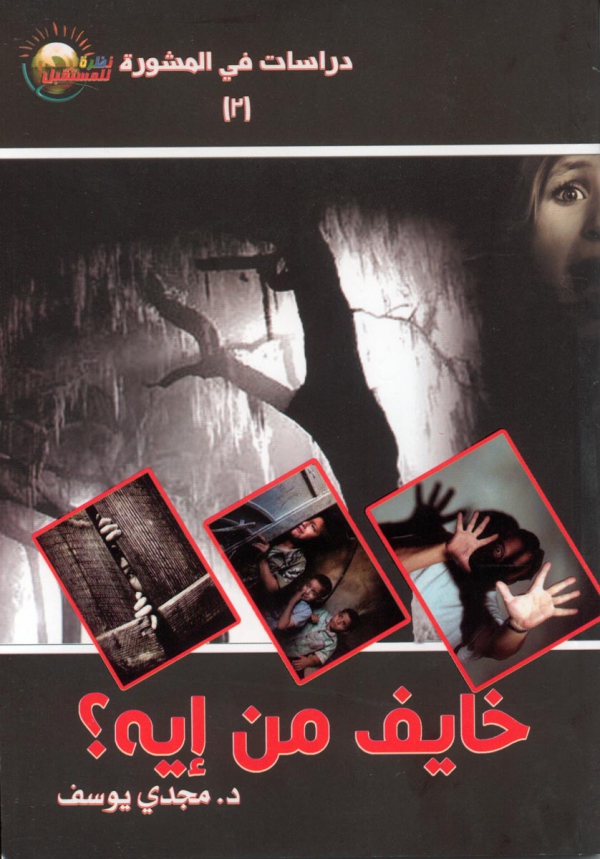Counseling Curricula
When pressures and problems grow, people need someone to stand by them, to listen, and to bring God's Word. This kind of faithful counsel can be like a candle lighting their way amid the harsh and difficult conditions of darkness that cover the roads of their lives. Vision for the Future's counseling curricula is intended to be this, and to help believers play such a role.
Martyrdom or Suicide?
Author: Dr. Magdy Youssef
Publisher: Vision For Future
In his book entitled "Suicide or Martyrdom?" Dr. Magdy Youssef provides a thorough study of how people succumb under growing pressures and problems, and a helpful means to help those who need someone to stand by them, to listen and give faithful counsel and help lead them to willful hope and change.
In the preface, he demonstrates that suicide is not only an abhorrent and undesirable act; but it is also a rejected act from both religious and social perspectives. Religion prohibits suicide because it is a life-taking behavior. The soul is created by God and belongs to Him alone. He is the only One who has the right to take it back whenever He wants. Suicide is also conceived socially as an expression of weak will and inability to cope with life difficulties.
The writer thinks that the act of suicide comprises two essential human attributes, namely, the will and freedom. It is the most volitional act practiced by those who want to end their life.
It is an astounding point to find that suicide is not only a human phenomenon but also an animal phenomenon. Do animals commit suicide? The author illustrates this point in the book's introduction.
"Suicide or Martyrdom?" is a medium size book of 161 pages divided into eleven chapters.
In the first chapter, the writer tackles the statistics which appear in a world suicide-rate map. The question is: Are you acquainted with the percentage of suicides? On seeing the percentages, the reader should be both shocked by the horrifying figures of the suicide cases in the world, which occur every minute, and by the most important factors that lead to suicide.
The second chapter provides a definition of the phenomenon of suicide. There are two definitions: one is an objective definition, the other is a psychological definition. According to the objective definition, suicide is a personal decision taken to end one's own life. According to the psychological definition, it is a sort of self-punishment or self-revenge.
The author answers many important questions about the phenomenon of suicide, such as:
- What are the reasons for suicide?
- How can such a tragedy be avoided?
- Are there certain distinguishing traits for those who attempt suicide?
The third and fourth chapters tackle the most strange and famous examples of suicide from around the world. The following is one of the strangest suicide stories he includes:
In March 1994, an autopsy report of the body of Ronald Opus showed that he died of a gunshot wound to the head. After he had jumped from the top of a ten-story building with the intent to commit suicide leaving a message indicating his despair with life, a shotgun took out a window and blew away his head. Neither the jumper nor the shooter was aware that a safety net had been erected by the maintenance workers at the eighth floor level, and that the jumper would have been saved if the shotgun had not been fired. Further investigation led to the discovery that it was fired from the ninth floor. A couple known by their neighbors for their frequently quarrels had been living in the apartment. At the time of the incident, the husband was threatening that he would shoot his wife if she did not stop arguing with him. He became so upset that he pulled the trigger. The shotgun was fired, but he completely missed his wife, and the pellets went through the window striking Roland in the head while he was passing the floor on the way down, which led to his murder. Thus the shooter was the rightful killer. But, to top off this coincidence, he insisted that he had not loaded his gun. Investigations revealed that a few weeks earlier, a neighbor had seen the man's son was loading the gun. The man's son was conspiring against his parents. Knowing the propensity of his father to use the shotgun threateningly, he loaded the gun with the expectation that if his father would carry out his threat and shoot his mother, the son would get rid of his parents in one fell swoop. Thus, it was the son who was finally charged, and, surprisingly, he was identified as the killer even though the one who had intended to commit suicide was Ronald Opus!
In the fifth chapter, Dr. Magdy addresses the different types of suicide. Individual suicide is not the only type. There are mass suicides orchestrated in accordance with certain bodies and communities such as: The Movement for the Restoration of the Ten Commandments of God, Order of the Solar Temple, and Death Lovers Club. Besides these are the intended fateful suicide, the conscious suicide based on objective, and other types cited and explained at length by the author.
In the sixth and seventh chapters, the author discusses the role of heredity and environment in the suicide phenomenon and how the positive laws stand from those who committed suicide. The author tackles problematic issues such as: whether one has the right to take one's own life; whether it is a felony, a misdemeanor, and whether it is a punishable crime; and whether people who commit suicide have civil and/or legitimate rights.
In the eighth chapter, the author sheds light on a contemporary event that has been observed in our Arab communities as people commit suicide to ignite revolution. A curious paradox happened in the other Arab countries after the repercussions of the Tunisian revolution, which took place to change the ruler and to rise against corruption. While demonstrations welcomed the ability of a single Tunisian citizen to change the reality and to condemn high prices, repeated incidents of suicide inspired by that young Tunisian, "Bouazizi," by his own model of suicide, occurred in other countries to proclaim their refusal of reality.
Questions the author raises in this context include:
- Is setting oneself on fire a sort of suicide or a national issue and a self-immolation?
- Should Bouazizi be considered a martyr, a person that committed suicide or a self-immolator?
In dealing with the suicide phenomenon, the author does not overlook talking about the subject of martyrdom in Chapter Nine. At the beginning, he gives a linguistic definition of martyrdom. It is derived from the Arabic word for "testimony," which refers to a person who is asked to testify, and the testimony here actually refers to the faith of that man.
Martyrdom is found in another of the monotheistic religions: persecution is closely linked to the history and growth of Christianity. The author answers the following questions:
- Why is there persecution and martyrdom?
- Why did the Roman state persecute Christianity?
- What are the ten major persecutions?
- What are the motives of martyrdom in Christianity?
- Does the Bible permit or forbid suicide?
The topic of the tenth chapter is about jihad-martyrdom in Islam. Though the meaning of martyrdom, derived from testimony, and carrying the meaning of completely giving or sacrificing oneself to the Islamic concept, in our contemporary reality, it remains confusing, distorted and a source of consternation; and more often than not, it is condemned and criminalized. Thus, religious elites and scholars simplify its conditions, and abjure the chaos and absurdity of its practice. It is noticeable that the word martyrdom is not mentioned in the Quran in the sense of killing for the sake of God, but it is mentioned in its linguistic sense. The scholar Tabatabaei cited in his interpretation "Al Mizan" that "martyrs are martyrs of deeds." The term, in the sense of warriors killed in battle, is not mentioned or used this way in the Quran. It is, rather, a modern Islamic expression.
The author discusses the role of such martyrdom operations in Islam, and considers the arguments of both supporters and opponents of it. He concludes his study by addressing the similarities and differences of the most controversial issues at the present time: Should what happen be considered suicide or martyrdom?





